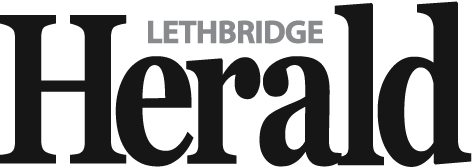Student exhibit focuses on AI
By Lethbridge Herald on July 23, 2025.
Alejandra Pulido-Guzman
Lethbridge Herald
The Southern Alberta Art Gallery is hosting an exhibition of art that showcases various pieces done by Lethbridge Collegiate Institute students, depicting their thoughts on Artificial Intelligence.
Generative Prompt is a group exhibition of local high school students working in an artist mentorship model with Lethbridge artist Michelle Sylvestre, where students provoke audiences to consider how AI increasingly interacts with their daily lives.
Sylvestre says the process started by having an art teacher from LCI select six students from Grade 9-12, and then she met with the selected students to come up with ideas for the theme of the exhibition.
“The first time I met with them, I kind of had in the back of my head this idea about commenting on AI, artificial intelligence. It’s such a hot topic right now and I wanted to know what the students were thinking about it,” says Sylvestre.
Initially the students thought they were being asked to use AI to create a work of art and they were against it as artists, but Sylvestre was not asking them to do so, she was asking them to comment on AI as artists and what they think the world would look like in the future, and if they are using it now, how does that feel like for them.
“I can understand their hesitation because AI is trained on previous works,” says Sylvestre. “So you can ask it to make an image with the style of Monet and it can do pretty good job. And the students were distraught about not having the labour behind it,” says Sylvestre.
As young artists, they spent a lot of time making art and trying to hone their practice and make it better, and it almost felt for them like AI was robbing that experience from them, she says.
“I think there are ways that you could use AI as an artist that would possibly circumvent or even strategically go against that copying, but I think you’d have to be really careful and really think ethically about using AI.”
The artists also explored the idea of what would the world be like now if AI was around in the past centuries, what that would have looked like, and how would we feel about it.
In the upper gallery at SAAG, one of the walls of the exhibit showcases what Sylvestre calls the process wall, because a big part of the process took place outside of workshop hours, while students were working from home. They would take pictures of what they had accomplished and sent it to her, and then in turn she would provide feedback, and parts of that process are showcased on one of the walls.
“We started in January of 2025 and then their exhibition opening was May 10, so they had to have the artwork ready for exhibition by the end of April to have time for installation and to write an explanation of their artwork,” says Sylvestre.
Next to all the artworks is a project description so the audience can get a sense of what the artists were thinking about and how their work is conceptualized in commenting and critiquing, mostly critiquing AI.
Using a variety of media, the young artists explored how AI has had an impact on the environment, the absorption of human information, and the shifting role of humanity in an increasingly digital world.
“They were really excited to be able to critique artwork, and I was really proud of the way that they commented on AI and how they made it their own,” says Sylvestre. “They made it from their particular perspective.”
One student was inspired by the Shakespeare play Hamlet, so their art showcases a robot holing a human skull in a theatre setting, while another student was inspired by Da Vinci’s Mona Lisa and created a Robolisa.
“They were taking their own inspiration from their own experience, from their own education and commenting on an AI pulling from those references which makes the exhibition extremely rich,” says Sylvestre.
The exhibition runs until Saturday at SAAG, with admission by donation.
19-18


